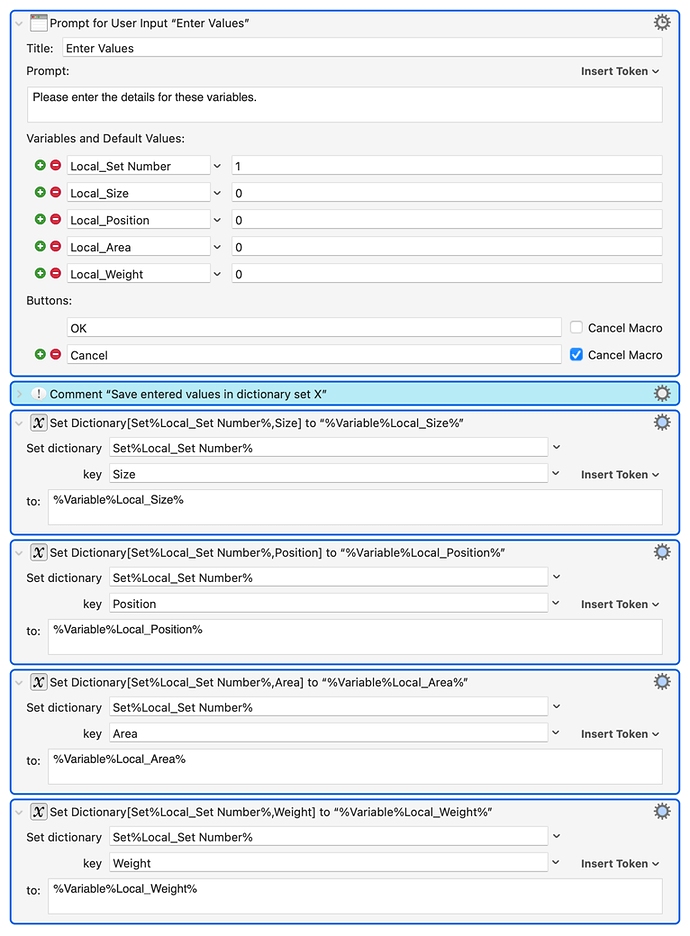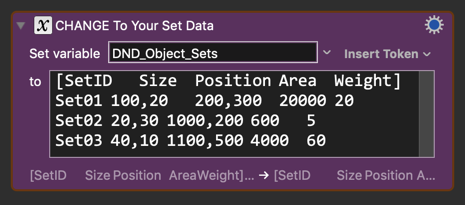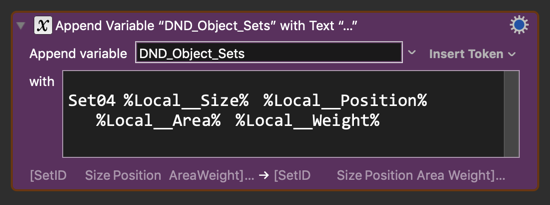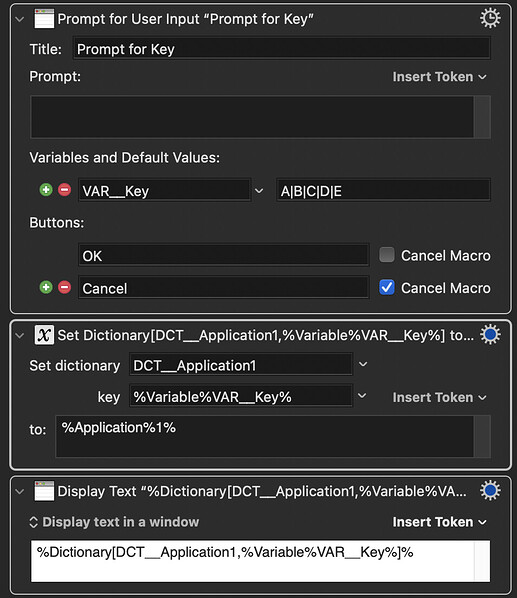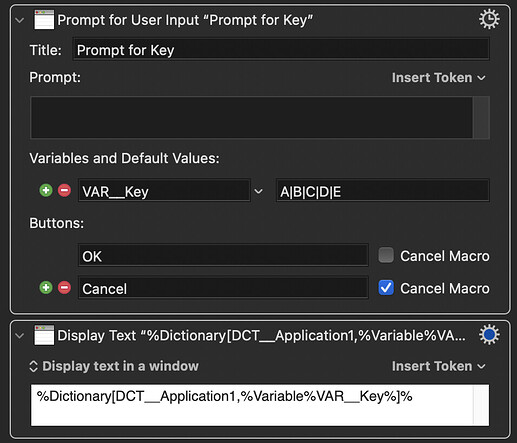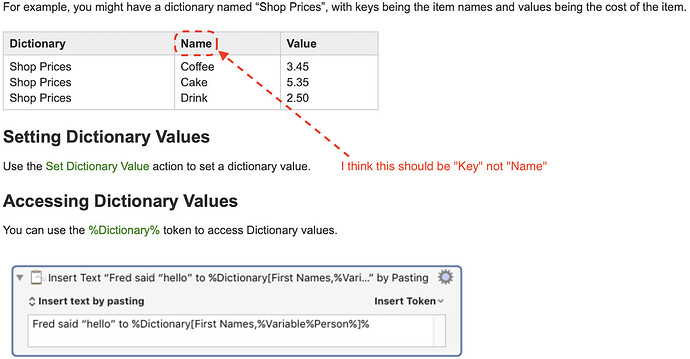Dictionaries work very similarly to Arrays (this is in programming in general) except instead of having a number as the index into the values you have a name. This is called a key-value pair. The dictionary name groups the keys and values together.
So in a traditional array you have multiple values like so:
array_name = (value1,value2,value3)
and can access individual values with
new_var1 = array_name(1)
new_var2 = array_name(2)
new_var3 = array_name(3)
(note, arrays in most languages are zero indexed (first value is at index 0, not 1) so this example isn't exact for them)
In a dictionary instead you name each entry and assign it's value to that name.
dict_name[key1]=value1
dict_name[key2]=value2
dict_name[key3]=value3
then you use the same dictionary/key name to recover the value
new_var1 = dict_name[key1]
In KM accessing dictionaries as a token via:
%Dictionary[dict_name,key1]%
One of KM's super powers is the ability to expand tokens in a variable name then use the result as new variable name, the % can make it hard to read, but it is absolutely a fabulous feature.
varDictName = "Set1"
%Dictionary[%Variable%varDictName%,key1]%
Now your token can refer to multiple dictionaries just by changing the varDictName to be the name of the dictionary you want to use. Or if you just want to embed a number:
varDictNum = 2
%Dictionary[Set%Variable%varDictNum%,key1]%
You can do the same with key names and use variable substitution to change which key you're looking at (I rarely use this).
If in KM you ever need a "true" array, just make your key names into numbers:
secretArray[1] = array_value_1
secretArray[2] = array_value_2
secretArray[3] = array_value_3
This is closer to a true array but can have differences like the numbers don't have to be consecutive and deleting an item leaves a hole, the indexes aren't renumbered.
